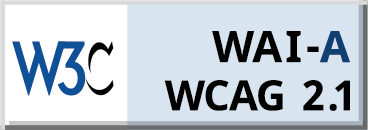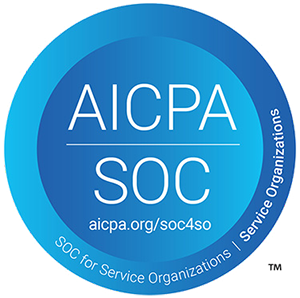In today’s professional landscape, credentialing programs have emerged as a cornerstone of trust, compliance, and career growth. By validating qualifications and professional achievements, credentialing ensures individuals meet the standards required to excel in their fields. This blog explores the importance, benefits, and future of credentialing systems and proctoring, emphasizing innovative technologies and strategies that enhance the process.
To dive deeper into the world of credentialing certification and certification programs, check out our full guide: The Ultimate Guide to Credential Programs.
What Is Credentialing?
Credentialing programs are structured processes of verifying qualifications, skills, and achievements. They ensure professionals meet industry standards and regulatory requirements, providing assurance of expertise and competence. Through credentialing systems, industries uphold quality and safety, while individuals gain recognition for their skills, often through training certification programs.
Why Is Credentialing Important?
Credentialing benefits both individuals and organizations by fostering trust, safety, and career growth. Key reasons for its importance include:
-
Professional validation ensures individuals meet required standards through training and certification.
-
Career advancement unlocks opportunities, enhancing earning potential with qualifications like technical certifications and IT certification programs.
-
Safety and compliance enforce adherence to regulatory standards, particularly in high-stakes industries, using professional certifications.
-
Industry standardization promotes consistency across professions with uniform skill recognition from the best certificate programs.
What Are the Different Types of Credentials?
Credentialing programs span various qualifications, each serving specific purposes. Common types include:
-
Certifications validate specific skills through training for certification, such as PMP, AWS Certified Solutions Architect, or ACLS.
-
Licenses provide legal permissions to practice in regulated fields, such as RN licenses or contractor permits, and are vital in credentialing certification.
-
Micro-credentials are short, skill-specific qualifications like Agile Development Techniques or Google Analytics Certification, often offered through online micro credentials.
-
Academic degrees include traditional qualifications like bachelor’s, master’s, or doctoral degrees, integral to credentialing systems.
-
Professional designations reflect expertise and ethical standards, aligning with credentialing specialist certification, such as CPA or CFA.
-
Digital badges are verifiable visual credentials awarded for specific tasks or skills, integrated with online certification training platforms.
-
Specialty certificates address niche areas, such as Big Data Analysis or pediatric healthcare, offered by the best certificate programs.
How to Build a Robust Credentialing Strategy?
A robust credentialing program aligns with organizational goals and integrates credentialing systems into talent management. Here’s how:
Align Credentials with Organizational Goals
-
Define core needs by identifying essential roles and competencies that require training certification programs.
-
Prioritize critical credentials by focusing on certifications crucial for compliance and performance, such as online technical certification courses.
-
Integrate future trends by embracing credentials in emerging areas like AI and blockchain, using innovative certification platforms.
Integrate Credentialing with Talent Management
-
Use credentials to streamline hiring and verify qualifications through online certification training.
-
Design programs for employees to earn industry-recognized credentials via certified online courses and exam help online.
-
Use credentials as benchmarks for promotions and leadership roles supported by IT certification programs.
-
Support credential attainment with incentives, offering pathways to earn certificates online.
Embrace Continuous Improvement
-
Conduct audits regularly to evaluate credentialing systems for relevance and impact.
-
Engage stakeholders by gathering feedback from employees and industry experts to refine credentialing certification strategies.
-
Leverage analytics to measure ROI of training certification programs and predict future needs using a certification manager.
-
Adopt technologies like blockchain and digital platforms for secure and efficient online training and certification.
Credentialing in High-Risk Industries
In industries like healthcare, finance, and aviation, credentialing certification is critical for safety and compliance. Errors in these sectors can have life-threatening consequences, making rigorous verification non-negotiable.
Examples of Credentialing in Action
-
Healthcare relies on verifying doctors’ and nurses’ licenses through training certification programs to prevent medical errors.
-
Finance depends on certifications like CFA and CPA to ensure regulatory compliance with the help of certification platforms.
-
Aviation ensures safety by validating licenses for pilots and engineers through online proctored exam services.
How Proctoring Powers Credentialing?
Modern credentialing systems rely heavily on online test proctoring to maintain the integrity of assessments. Tools like AI-powered fraud detection, live monitoring, and secure exam platforms ensure fair and secure credentialing processes.
-
Alvy automates the proctoring process entirely, offering 24/7 availability for assessments without human oversight. With real-time fraud detection and interactive monitoring, Alvy provides a scalable, efficient, and secure solution for online exam software.
-
Automated proctoring monitors candidate behavior in real-time, flagging unusual activities like gaze shifts or unauthorized device usage. This ensures that proctored exams are conducted fairly without constant human supervision.
-
Live proctoring involves human proctors overseeing exams in real-time through secure video feeds, intervening if suspicious activities occur. This is ideal for online proctored exam cheating prevention in high-stakes settings.
-
Record and review sessions are stored for thorough post-test analysis, ensuring detailed scrutiny through online exam proctoring services.
-
Candidate verification uses biometric tools like facial recognition and ID validation to prevent impersonation, safeguarding the credibility of training for certification.
-
Secure browsers restrict unauthorized applications, ensuring a controlled environment during online training and certification.
Conclusion
Credentialing programs and proctoring are indispensable for maintaining professionalism, compliance, and trust. By embracing advanced technologies like AI proctoring and certification platforms, organizations can enhance their credentialing systems and prepare for the future. Solutions like Alvy empower businesses to navigate complex landscapes with confidence, ensuring secure and scalable processes for certification programs and proctored exam help.
.png)






Leave a Reply